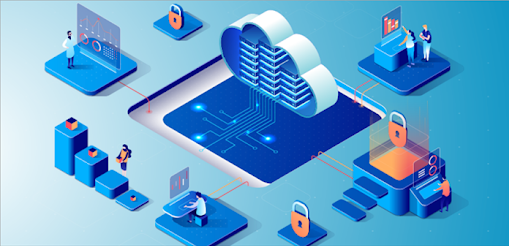EDR vs DLP: Threats to organisations' data may come from a variety of directions. To safeguard their interests, clients, and workers and comply with legislation, more businesses are investing in robust DLP and EDR solutions.
Both are good, but knowing the difference between EDR and DLP is more. Since you cannot end up using both for your needs. Therefore, to help you out, here is detailed information on what is the difference between EDR and DLP. Let's learn in detail!
What is the difference between EDR and DLP: Brief Comparison
What is EDR?Platforms for endpoint detection and response (EDR) assist security teams in identifying unusual endpoint behavior to eradicate threats and swiftly reduce an attack's damage.
Endpoint detection and response (EDR) is a category of technologies used to identify and analyze endpoint threats. Typically, EDR technologies include detection, investigation, threat hunting, and response capabilities.

Endpoint detection and response (EDR) is now a necessary endpoint security solution since there is no better method to identify an intrusion than by monitoring the target environment.

Data loss prevention (DLP) is a collection of technologies and procedures to protect sensitive data from being lost, mishandled, or accessed by unauthorized users. DLP software classifies regulated, sensitive, and business-critical data. It identifies violations of policies created by businesses or within a predetermined policy pack, generally in response to regulatory compliance requirements such as HIPAA, PCI-DSS, or GDPR. DLP employs alarms, encryption, and other protective measures to prevent end users from inadvertently or maliciously revealing data that might harm the company.
Software and solutions for data loss prevention scan and optimize endpoint activity, filter data streams on corporate networks, and monitor data in the cloud to safeguard data at rest, in transit, and use. DLP also enables reporting to satisfy compliance and auditing needs and identify areas of vulnerability and anomalies for forensics and incident response.
What is the difference between EDR and DLP Based on Their Importance?
Let’s know about the importance of the EDR and DLP and how they work. The below information would only focus on their importance to answer the most asked question: “What is the difference between EDR and DLP.”
IMPORTANCE OF EDRIn the modern world, businesses are constantly under assault. In the expectation that the endpoint is still vulnerable, opportunistic assaults can be as simple as a threat actor sending an email with a ransomware attachment. With more complicated operations, attackers may adopt evasion techniques such as running malware in memory to disguise previously revealed vulnerabilities or attack methods.
Even if EDR security tools have never faced a specific zero-day attack before, they can still prevent it since many zero-day attacks utilize techniques that are already well-known to the security community. However, the most sophisticated and severe assaults must be identified and neutralized by EDR.
IMPORTANCE OF DLPData Loss Prevention (DLP) is necessary since information is so valuable nowadays. Trojans, malware, ransomware, phishing, spear-phishing, whaling, watering hole attacks, corporate espionage, and other techniques are increasingly used by threat actors to access sensitive information and earn cash.
According to an IBM study, data breach expenses increased by 13% between 2020 and 2022. The average price tag in 2021 was 4.24 million dollars.
A data breach may devastate a company's ability to do business, assets, reputation, and even its survival in the long run.
The victims of data breaches are at risk of being the targets of extortion, identity theft, and financial fraud. There are severe penalties for businesses that don't follow the General Data Protection Regulation (GDPR) rules or the United States Data Protection Act (DPA).
What is the difference between EDR and DLP Based On Benefits?
Here we will bring out some benefits of both EDR and DLP that will help you know the difference between EDR and DLP.
DLP BENEFITS Prevent the theft of confidential informationA data loss prevention (DLP) solution can prevent an employee's theft of confidential information. Before a file is uploaded to a server, it detects and removes any private data. An infected worker is unable to access the data in this way.
Safeguards against ransomware attacksData loss prevention systems detect when private data is transferred to another storage medium, preventing theft. You can respond quickly to protect your company's most precious resources.
EDR Protects Against PhishingProtects confidential information by immediately flagging documents with the DSP engine when they are shared. It helps fend off emails seeming to be from legitimate businesses, or "phishing," which are attempts to steal personal information.
EDR BENEFITS Locate dangers immediately and put an end to themEDR solutions can detect and halt cyber attacks immediately, frequently via automation. EDR "tools" constantly monitor endpoint activity to see malicious or suspicious behavior in real-time.
Be vigilant and seek down any dangersBecause EDR solutions frequently require actively searching out new risks that other cyber security technologies might not detect, they can promptly identify and neutralize cyber dangers. So, try EDR security for endpoint protection.
Recruit the aid of safety professionals: EDR vs DLPEDR solutions often enhance an organization's capacity for human-level analysis of security concerns and the automated capabilities that EDR technologies give for finding and blocking threats.
Concluding Remarks on What is the difference between EDR and DLP
Hope, now you know in detail about What is the difference between EDR and DLP. It depends on you which solution you are using for your needs. Therefore, understand EDR and DLP and make wise decisions.